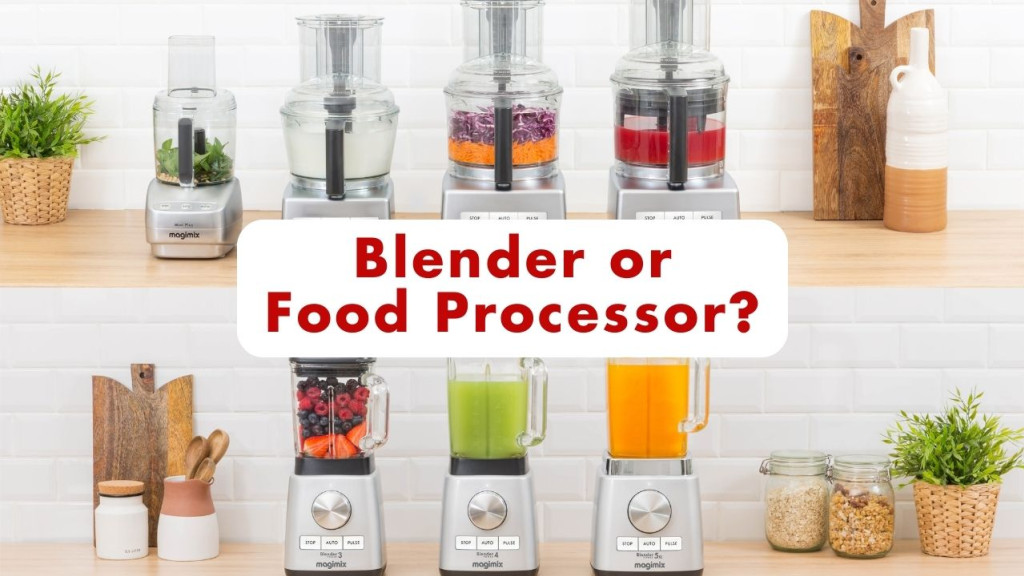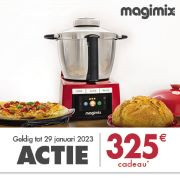Blenders and food processors are two of the most versatile appliances in the kitchen. They can both be used to chop, blend, and puree food, but they have different strengths and weaknesses.
In this article, we will discuss the key differences between blenders and food processors, so you can decide which one is right for you.
What is a blender?
A blender is a kitchen appliance that uses a rotating blade to mix and blend food. Blenders are typically used to make smoothies, shakes, soups, and sauces. They can also be used to grind coffee beans, chop nuts, and puree vegetables, depending on the shape of the jug or attachments.
What is a food processor?
A food processor is a kitchen appliance that uses a rotating blade and a variety of attachments to chop, slice, shred, grate, and puree food. Food processors are typically used to make dough, chop vegetables, shred cheese, puree fruit and vegetables, and many more food preparation tasks.
What are the key differences between blenders and food processors?
The key differences between blenders and food processors can be summarized as follows:
- Blades: Blenders typically have a high-powered blade that is designed to blend food into a smooth liquid. The blade typically uses speed to liquidise food. Food processors, on the other hand, have blades that are knife-sharp. They are designed for different tasks, such as chopping, slicing, shredding, and grating. Magimix food processors use Sabatier stainless-steel. This type of blade, unlike other food processors is ultra-precise. It cuts through food like a surgical knife, preserving the integrity of even the softest fruits like tomatoes and bananas.
- Containers: Blenders typically have tall, narrow jugs that are designed to hold liquids. The Magimix Blender Power jug is made with borosilicate glass. Unlike typical glass, borosilicate glass is ultra-durable. It can withstand sudden temperature changes, from ice to boiling water. Pyrex, for example, also uses borosilicate glass. In addition, blender jugs typically are specially designed to create a certain movement or vortex in the jug, enabling foods to be liquidised more efficiently. Food processors, on the other hand, have wide, shallow containers that are designed to hold larger quantities of food.
- Attachments: Blenders do not typically come with many attachments. However, the Magimix Blender Power can be used with accessories such as blend cups, enabling you to blend directly into your cup and go. There is also a glass mill available, which is great for blending small quantities or milling hard ingredients like nuts and beans. Magimix food processors also come with a variety of attachments that can be used for different tasks. Accessories make the food processors even more versatile. For example, you can purchase a juicer attachment, allowing you to use your food processor as a juicer as well. There are many more accessories available on the Magimix website.
- Power: Blenders are typically more powerful than food processors. This is because blenders need to be able to blend food into a smooth liquid, which requires a lot of power and speed. Food processors, on the other hand, do not need as much power, because they are not typically used to blend food into a smooth liquid. Rather, they are used for their knife-sharp precision and versatility.
Which one should you pick?
The decision of whether to buy a blender or a food processor depends on your individual needs and cooking habits. If you are looking for an appliance that can make smoothies, shakes, soups, and sauces, then a blender is a good choice. If you are looking for an appliance that can chop, slice, shred, grate, and puree food, then a food processor is a good choice.
If you are not sure which one to buy, then we recommend getting both a blender and a food processor. This will give you the best of both worlds and allow you to make a wider variety of dishes.
Here are some additional factors to consider when choosing between a blender and a food processor:
Your budget: Blenders and food processors can range in price from a few dozen dollars to several hundred dollars. If you are planning on using these appliances regularly, it is important to choose a brand that is known for high quality and durability. While it may be tempting to go for cheaper models, bear in mind that you will need to replace them every year or so, as their motor will not last through continuous use. High-quality materials also play an important role. You don’t want chunks of metal or blade going into your food!
Your storage space: Blenders and food processors can take up a fair amount of counter space. If you have limited counter space, then you may want to consider smaller models like the Blender Power 3 or Mini Plus food processor.
Your cooking skills: If you are a beginner cook, then you may want to start with a blender, as they are easier to use and more straightforward. Food processors can be more versatile, but they may require more practice and patience, especially with learning how to use the different attachments and accessories.
Conclusion
Blenders and food processors are both essential appliances for any kitchen. They can both be used to make a wide variety of dishes, but they have different strengths and weaknesses. The best way to decide which one is right for you is to consider your individual needs and cooking habits. With anything, it is best to choose appliances that are made to last using high-quality materials.











